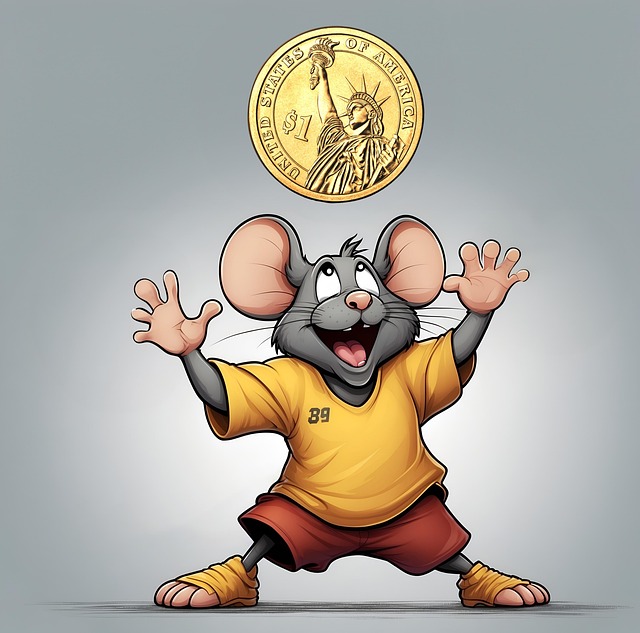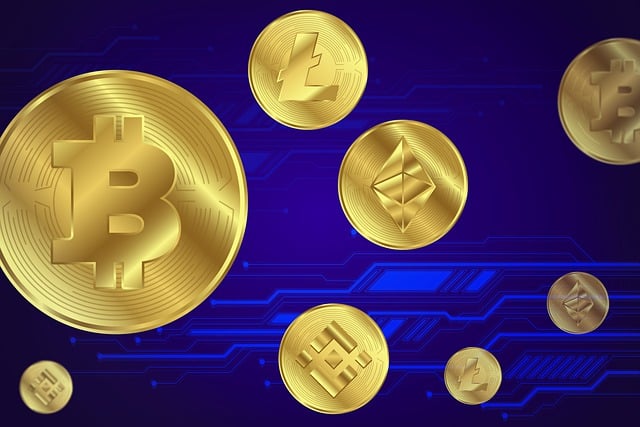Spot Trading Fee Binance
Author: Jameson Richman Expert
Published On: 2025-10-19
Prepared by Jameson Richman and our team of experts with over a decade of experience in cryptocurrency and digital asset analysis. Learn more about us.
Meta description: The spot trading fee Binance traders pay affects profitability—this article explains how Binance calculates spot trading fees, maker vs taker rates, fee reduction strategies (BNB discounts, VIP tiers, maker orders), real examples, comparisons, and actionable steps to minimize costs. Learn everything you need to know about spot trading fee Binance and how to optimize trading costs effectively.

Why understanding spot trading fee Binance matters
Every basis point of cost diminishes returns. Whether you're a casual investor or an active trader, knowing how the spot trading fee Binance applies to your trades helps you calculate break-even points, choose order types, and adopt strategies to lower expenses. This article walks through fee mechanics, shows concrete calculations, compares Binance to alternatives, and gives practical steps to reduce costs.
Understanding Binance spot trading fees
What is a spot trading fee?
A spot trading fee is the commission charged when buying or selling a cryptocurrency on an exchange's spot market. It is usually a percentage of the trade value and is applied when the order is executed. On Binance, spot trading fees are commonly quoted as maker and taker fees.
Maker vs. Taker fees — the core distinction
- Maker fee: Paid when your order adds liquidity to the order book (for example, a limit order placed below the market on a buy or above the market on a sell, and that order sits until matched by another trader).
- Taker fee: Paid when your order removes liquidity from the order book—typically when you market-buy or market-sell, or place a limit order that immediately executes against existing orders.
Exchanges typically reward makers with lower fees because they increase the available liquidity; takers often pay more because they consume it.
Typical fee structure you’ll see on Binance (how it works)
Binance uses a tiered fee schedule based on 30-day trading volume and BNB balance. The common baseline for many users historically has been a 0.10% maker fee and 0.10% taker fee for spot trading, but those numbers can change and are subject to promotions and discounts. Always verify your personalized fee rate on Binance’s official fee schedule.
Example tiered structure (illustrative)
- Standard account (low volume): maker 0.10%, taker 0.10%
- VIP levels (higher volume / BNB holdings): fees decline incrementally—maker 0.08% / taker 0.10%, or lower down to 0.02%/0.04% at the highest tiers
- BNB discount: paying fees with BNB historically reduced fees by a percentage (often around 25%), further lowering the cost per trade
Note: The above numbers are illustrative. Binance periodically updates rates and discount policies. For your current fee rates, check your account fee page.

How Binance calculates spot trading fees (formula and examples)
Fee calculation is straightforward: Fee = trade value × fee rate.
Basic formula
Fee = Order Quantity × Executed Price × Fee Rate
Example 1 — Market buy of BTC using USDT (simple)
Assume:
- Executed buy: 0.05 BTC at a market price of 40,000 USDT/BTC
- Order value = 0.05 × 40,000 = 2,000 USDT
- Fee rate (example standard taker) = 0.10% = 0.001
Fee = 2,000 × 0.001 = 2 USDT. If you pay fees with BNB and have a 25% discount, fee becomes 1.50 USDT.
Example 2 — Limit maker order
Assume you place a limit sell order for 1,000 USDT of an altcoin that sits on the book and later executes as maker at maker fee 0.08%:
- Fee = 1,000 × 0.0008 = 0.80 USDT
By using maker orders where possible, you reduce cost per trade compared to taker execution.
How to check your exact spot trading fee on Binance
- Log in to your Binance account.
- Go to the profile or dashboard menu and select "Fee" or "Fee structure" (names may vary).
- Look for your personalized VIP level, 30-day trading volume, and BNB balance—these determine your fee tier.
- Check the spot trading section for maker and taker fees and whether a BNB discount is enabled.
If uncertain, contact Binance customer support or consult the official help center for region-specific fee notes and restrictions.
Ways to reduce your Binance spot trading fees
Reducing fees can improve your net returns significantly, especially for frequent traders. Here are proven methods:
1. Pay fees with BNB
Enabling fee payment in BNB typically gives a percentage discount (historically around 25%); the exact discount may vary. Holding a small BNB balance to cover fees is a simple and effective way to lower costs.
2. Climb VIP tiers with higher volume or BNB holdings
Binance lowers fees as your 30-day spot trading volume increases or as you hold more BNB. If you trade frequently or manage large positions, consolidating volume on Binance to earn a higher VIP level can reduce per-trade fees materially.
3. Use maker-only order types
Limit orders set as "post-only" or "maker-only" ensure you add liquidity and receive maker fees (which are lower). This is especially effective for active traders who can wait slightly longer for fills.
4. Optimize trade size and frequency
Micro-trading (many tiny trades) increases total fees. Where feasible, batch trades or use larger, less frequent trades to reduce absolute fee exposure.
5. Use OTC or large-order services for big trades
For very large block trades, Binance OTC desks may offer bespoke pricing with lower or no taker fees and reduced slippage. This is practical for institutional traders or high-net-worth individuals.
6. Choose pairs with tight spreads and high liquidity
High-spread or low-liquidity pairs increase implicit costs (slippage). Trading major pairs (BTC/USDT, ETH/USDT) typically reduces the margin paid to makers/takers in the form of spread.
7. Time trades to market conditions
When volatility spikes, spreads widen and taker costs (including slippage) rise. Execute large trades during stable periods when the order book is deep.

Other costs and hidden fees to watch
Spot trading fees are only one component of cost. Consider these additional expenses:
- Spread: The difference between the buy and sell price—an implicit cost.
- Slippage: Execution price differences during volatile markets.
- Withdrawal fees: Vary by asset and network (e.g., BTC, ERC-20 tokens).
- Conversion fees: Converting between tokens or stablecoins may carry fees or spread.
- Funding and margin fees: Only relevant if using margin or futures.
Always account for these factors when measuring total trading cost.
Spot trading fee Binance — practical examples for traders
Scenario A: Day trader making 20 taker trades per day
Assumptions:
- Average trade size: 1,000 USDT
- Taker fee: 0.10%
- Trades/day: 20 (10 buys, 10 sells)
Daily fee cost = 20 × 1,000 × 0.001 = 20 USDT. Monthly (22 trading days) = 440 USDT. Implementing BNB discount or maker strategies could cut this by ~25%–50% depending on VIP level—moving from 440 to ~220–330 USDT monthly.
Scenario B: Swing trader with fewer trades
If you trade 4 times per month at 5,000 USDT each, monthly fee without discounts = 4 × 5,000 × 0.001 = 20 USDT. Lower trade frequency dramatically reduces fee drag on returns, highlighting strategy alignment with fee awareness.
Comparing Binance spot trading fees to other platforms
Binance is competitive on fees because of volume-based tiers and BNB discounts, but best choice depends on your needs (liquidity, regulatory jurisdiction, available pairs, custody features). When comparing fee structures:
- Compare maker/taker rates and VIP thresholds.
- Include withdrawal/ deposit costs and spreads in total cost analysis.
- Consider whether the exchange’s liquidity supports your trade sizes without significant slippage.
For cost-efficient trading across asset classes, including forex and crypto, review guides that compare commission structures and effective costs—this reference on low-commission brokers is useful: Forex brokers with the lowest commission.

How market context and specific assets affect your fees
Trading popular pairs like BTC/USDT or ETH/USDT benefits from deep order books and tight spreads, minimizing implicit costs. For niche altcoins, wide spreads and low liquidity can make nominally low exchange fees irrelevant because slippage dominates.
To see long-term market history and volatility for assets such as Bitcoin—which helps plan trades around liquidity and cost—consult analyses like this Bitcoin price history and volatility chart.
Regulatory and regional variations
Binance fee access and features can vary by jurisdiction. Some regions have restrictions on margin or futures, and localized platforms (Binance US, Binance Jersey, etc.) may have different fee schedules or available assets. Always confirm local fee pages and terms.
How to build a fee-aware trading plan
Follow these steps to ensure fees don’t erode your strategy:
- Calculate expected monthly trading volume and average trade size.
- Identify whether your strategy is maker-focused (limit-orders) or taker-heavy (market-orders).
- Estimate fees using current maker/taker rates and include withdrawal and spread estimates.
- Model outcomes with and without fee-reduction tactics (BNB, VIP levels, post-only orders).
- Choose an execution plan that matches your risk tolerance and cost targets (e.g., fewer, larger trades for swing traders; maker-only strategies for scalpers).

Frequently asked questions (FAQ)
Q: Are Binance spot fees the same for all trading pairs?
A: No. While fee rates (maker/taker) apply across spot markets, effective cost varies by pair due to liquidity and spread. Also, fee promotion for specific new tokens or campaigns can temporarily alter charges.
Q: Can I get a customized fee schedule?
A: Institutional or high-volume traders can often negotiate bespoke arrangements with Binance, especially via OTC desks or institutional desks. Contact Binance institutional sales for details.
Q: Do fee discounts stack?
A: Discounts like BNB payment and VIP tiers interact according to Binance policy. Historically, the BNB discount applies after determining your base tier fee, but specific stacking rules may change. Check the official fee page for current stacking mechanics.
Q: How frequently do fees update?
A: Binance may update fee schedules periodically and can run promotions. Since terms can change, review your account’s fee page frequently and subscribe to Binance announcements if you trade actively.
Advanced suggestions for active and institutional traders
Active traders can adopt sophisticated tactics to lower total cost:
- Use API execution with smart order routing to reduce slippage and access maker opportunities.
- Negotiate institutional terms or use OTC desks for large blocks.
- Implement VWAP/TWAP algorithms to slice orders and minimize market impact.
- Monitor order book depth and place limit orders near best bids/offers to maximize maker fills.
Research and asset selection—minimize cost by trading liquid assets
Asset selection affects implicit costs. Trading a well-known coin with high market depth reduces slippage. For research on specific assets and their outlooks (for example, XRP), combine fee planning with market analysis to choose optimal entry/exit windows: XRP price prediction and analysis.

Spot trading fee Binance checklist before executing trades
- Check your current maker and taker rates in your Binance account.
- Enable BNB fee payment if it reduces your costs.
- Set limit/post-only orders when possible to capture maker fees.
- Estimate total cost including spread and slippage, not just the percentage fee.
- Consider trading during high-liquidity periods to minimize implicit costs.
- For large trades, contact OTC or use execution algorithms to reduce market impact.
Conclusion — making spot fees work for you
Understanding and optimizing spot trading fee Binance requires both awareness of the nominal maker/taker rates and attention to implicit costs like spread and slippage. Use BNB discounts, VIP tiers, maker-only strategies, and intelligent execution to reduce your effective trading cost. Always check your personalized fee schedule on Binance and model fees into your trading plan—small percentage improvements compound into meaningful increases in profitability over time.
For additional context on market volatility and asset selection, consult longer-form analyses such as a bitcoin price history review and asset-specific predictions linked above to align fee strategies with market behavior: Bitcoin price history, cost-efficient broker guidance, and XRP outlook.
Take action now: review your Binance fee page, enable BNB fee discounts if beneficial, and test maker-only orders on small trades to confirm execution patterns before scaling up.